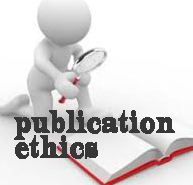ANTIOXIDANT POTENTIAL OF RED AND WHITE CABBAGE: A COMPARISON
Abstract
This study aimed to compare the antioxidant activity of white cabbage (B. oleracea var. capita f. alba) and red cabbage (B. oleracea var. capita f. rubra) in vitro. Dried cabbages were extracted by Soxhlet extraction using chloroform as solvent. The extracts were screened for phytochemicals followed by the antioxidant capacity measurement through free radical scavenging activity (DPPH and ABTS). The results showed that red cabbage extract (RCE) significantly had stronger antioxidant activity than white cabbage (WCE) (P<0,05). The IC50 values of RCE were 350,80 ± 5,27 µg/ml (DPPH) and 87,03 ± 1,92 µg/ml (ABTS) while these of WCE were 613,75 ± 8,76 µg/ml and 114,57± 0,41 µg/ml, respectively. Moreover, a higher level of phytoconstituents was found in RCE based on thin-layer chromatography analysis. These findings support that red cabbage has higher antioxidant activity than white cabbage which may be correlated with its phytoconstituents concentration.
Keywords
Full Text:
PDFReferences
Ahmed, M. F., Rao, A. S., Ahemad, S. R., & Ibrahim, M. K. (2012). Phytochemical studies and antioxidant activities of Brassica oleracea L. var. capitata. International Journal of Pharmacy and Pharmaceutical Sciences, 4(3), 374-378.
Ashraf, M. F., Abd Aziz, M., Stanslas, J., Ismail, I., & Abdul Kadir, M. (2013). Assessment of antioxidant and cytotoxicity activities of saponin and crude extracts of Chlorophytum borivilianum. The Scientific World Journal, 2013, 216894. doi: 10.1155/2013/216894
Chauhan, E. S., Tiwari, A., & Singh, A. (2016). Phytochemical screening of red cabbage (Brassica oleracea) powder and juice - A comparative study. Journal of Medicinal Plants Studies, 4(5), 196-199.
Chen, Z., Tian, R., She, Z., Cai, J., & Li, H. (2020). Role of oxidative stress in the pathogenesis of nonalcoholic fatty liver disease. Free Radical Biology and Medicine, 152, 116-141. doi: https://doi.org/10.1016/j.freeradbiomed.2020.02.025
Chun, O. K., Smith, N., Sakagawa, A., & Lee, C. Y. (2004). Antioxidant properties of raw and processed cabbages. International Journal of Food Sciences and Nutrition, 55(3), 191-199. doi: 10.1080/09637480410001725148
Cooke, M. S., Evans, M. D., Dizdaroglu, M., & Lunec, J. (2003). Oxidative DNA damage: mechanisms, mutation, and disease. The FASEB Journal, 17(10), 1195-1214. doi: https://doi.org/10.1096/fj.02-0752rev
Cruz, A. B., Pitz, H. D., Veber, B., Bini, L. A., Maraschin, M., & Zeni, A. L. (2016). Assessment of bioactive metabolites and hypolipidemic effect of polyphenolic-rich red cabbage extract. Pharmaceutical Biology, 54(12), 3033-3039. doi: 10.1080/13880209.2016.1200633
Doan, H. V., Riyajan, S., Iyara, R., & Chudapongse, N. (2018). Antidiabetic activity, glucose uptake stimulation and α-glucosidase inhibitory effect of Chrysophyllum cainito L. stem bark extract. BMC Complementary and Alternative Medicine, 18(1), 267. doi: 10.1186/s12906-018-2328-0
García-Sánchez, A., Miranda-Díaz, A. G., & Cardona-Muñoz, E. G. (2020). The role of oxidative stress in physiopathology and pharmacological treatment with pro- and antioxidant properties in chronic diseases. Oxidative Medicine and Cellular Longevity, 2020, 2082145. doi: 10.1155/2020/2082145
Giordano, D., Beta, T., Gagliardi, F., & Blandino, M. (2018). Influence of agricultural management on phytochemicals of colored corn genotypes ( Zea mays L.). Part 2: Sowing time. 66(17), 4309-4318. doi: 10.1021/acs.jafc.8b00326
Gocan, S., & Cimpan, G. (2004). Review of the analysis of medicinal plants by TLC: Modern approaches. Journal of Liquid Chromatography & Related Technologies, 27(7-9), 1377-1411. doi: 10.1081/JLC-120030607
González-Burgos, E., & Gómez-Serranillos, M. P. (2012). Terpene compounds in nature: a review of their potential antioxidant activity. Current Medicinal Chemistry, 19(31), 5319-5341. doi: 10.2174/092986712803833335
Hafidh, R. R., Abdulamir, A. S., Vern, L. S., Abu Bakar, F., Abas, F., Jahanshiri, F., & Sekawi, Z. (2011). Inhibition of growth of highly resistant bacterial and fungal pathogens by a natural product. The open microbiology journal, 5, 96-106. doi: 10.2174/1874285801105010096
Hayes, J. D., Dinkova-Kostova, A. T., & Tew, K. D. (2020). Oxidative stress in cancer. Cancer Cell, 38(2), 167-197. doi: https://doi.org/10.1016/j.ccell.2020.06.001
Jacob, J. A., Mahal, H. S., Mukherjee, T., & Kapoor, S. (2011). Free radical reactions with the extract of brassica family. Food Chemistry, 129(3), 1132-1138. doi: 10.1016/j.foodchem.2011.05.091
Kooti, W., Servatyari, K., Behzadifar, M., Asadi-Samani, M., Sadeghi, F., Nouri, B., & Zare Marzouni, H. (2017). Effective medicinal plant in cancer treatment, Part 2: Review study. Journal of Evidence-Based Complementary & Alternative Medicine, 22(4), 982-995. doi: 10.1177/2156587217696927
Kryl’skii, E. D., Razuvaev, G. A., Potapova, T. N., Akinina, A. I., & Nihaev, L. E. (2021). Functioning of the antioxidant defense system in rotenone-induced parkinson’s disease. Bulletin of Experimental Biology and Medicine, 171(6), 716-721. doi: 10.1007/s10517-021-05302-4
Kumkrai, P., Weeranantanapan, O., & Chudapongse, N. (2015). Antioxidant, α-glucosidase inhibitory activity and sub-chronic toxicity of Derris reticulata extract: its antidiabetic potential. BMC Complementary and Alternative Medicine, 15, 35.
Kusznierewicz, B., Bartoszek, A., Wolska, L., Drzewiecki, J., Gorinstein, S., & Namieśnik, J. (2008). Partial characterization of white cabbages (Brassica oleracea var. capitata f. alba) from different regions by glucosinolates, bioactive compounds, total antioxidant activities and proteins. LWT - Food Science and Technology, 41(1), 1-9. doi: https://doi.org/10.1016/j.lwt.2007.02.007
Leike, H. (1988). Cabbage (Brassica oleracea var. capitata L.). In Y. P. S. Bajaj (Ed.), Crops II (pp. 226-251). Berlin, Heidelberg: Springer Berlin Heidelberg.
Liang, Y., Li, Y., Zhang, L., & Liu, X. (2019). Phytochemicals and antioxidant activity in four varieties of head cabbages commonly consumed in China. Food Production, Processing and Nutrition, 1(1), 3. doi: 10.1186/s43014-019-0003-6
Ma, F., Onoda, T., Li, W., Sasaki, T., Ma, L., Zhang, Q., & Koike, K. (2013). A new flavonoid glycoside and other chemical constituents from leaves of Rosa davurica and their antioxidant activity. Natural Product Research, 27(23), 2178-2182. doi: 10.1080/14786419.2013.811408
Morales-López, J., Centeno-Álvarez, M., Nieto-Camacho, A., López, M. G., Pérez-Hernández, E., Pérez-Hernández, N., & Fernández-Martínez, E. (2017). Evaluation of antioxidant and hepatoprotective effects of white cabbage essential oil. Pharmaceutical Biology, 55(1), 233-241. doi: 10.1080/13880209.2016.1258424
Podse˛dek, A., Sosnowska, D., Redzynia, M., & Anders, B. (2006). Antioxidant capacity and content of Brassica oleracea dietary antioxidants. International Journal of Food Science & Technology, 41(s1), 49-58. doi: https://doi.org/10.1111/j.1365-2621.2006.01260.x
Rokayya, S., Li, C. J., Zhao, Y., Li, Y., & Sun, C. H. (2014). Cabbage (Brassica oleracea L. var. capitata) phytochemicals with antioxidant and anti-inflammatory potential. Asian Pacific Journal of Cancer Prevention, 14(11), 6657-6662. doi: 10.7314/apjcp.2013.14.11.6657
Salomone, F., Godos, J., & Zelber-Sagi, S. (2016). Natural antioxidants for non-alcoholic fatty liver disease: molecular targets and clinical perspectives. Liver Int, 36(1), 5-20. doi: 10.1111/liv.12975
Sasidharan, S., Chen, Y., Saravanan, D., Sundram, K. M., & Yoga Latha, L. (2011). Extraction, isolation and characterization of bioactive compounds from plants' extracts. African journal of traditional, complementary, and alternative medicines : AJTCAM, 8(1), 1-10.
Sharma, V., & Paliwal, R. (2013). Preliminary phytochemical investigation and thin layer chromatography profiling of sequential extracts of Moringa oleifera pods. International Journal of Green Pharmacy, 7, 41-45.
Sugiastuti, S., Farida, Y., & Sari, D. P. P. (2011). Antioxidant activity of white and red cabbage (Brassica oleracea var. capitata) using DPPH. Paper presented at the The 2nd International Conference on Pharmacy and Advanced Pharmaceutical Sciences in Yogyakarta, Indonesia.
Upadhyay, R., Sehwag, S., & Singh, S. P. (2016). Antioxidant activity and polyphenol content of Brassica oleracea varieties. International Journal of Vegetable Science, 22(4), 353-363. doi: 10.1080/19315260.2015.1048403
Waghulde, S., Khan, N. A., Gorde, N., Kale, M., Naik, P., & Yewale, R. P. (2019). Comparative antimicrobial activity study of Brassica oleceracea. Proceedings, 9(1), 64.
Wilson, D. W., Nash, P., Buttar, H. S., Griffiths, K., Singh, R., De Meester, F., . . . Takahashi, T. (2017). The role of food antioxidants, benefits of functional foods, and influence of feeding habits on the health of the older person: An overview. Antioxidants (Basel, Switzerland), 6(4), 81. doi: 10.3390/antiox6040081
Yadav, R. N. S., & Agarwala, M. (2011). Phytochemical analysis of some medicinal plants. Journal of phytology, 3, 10-14.
Zhou, C., Huang, Y., & Przedborski, S. (2008). Oxidative stress in Parkinson's disease: a mechanism of pathogenic and therapeutic significance. Annals of the New York Academy of Sciences, 1147, 93-104. doi: 10.1196/annals.1427.023
DOI: https://doi.org/10.24114/jbio.v8i2.36656
Article Metrics
Abstract view : 490 timesPDF - 103 times
Refbacks

This work is licensed under a Creative Commons Attribution 4.0 International License.
INDEXING
JBIO : Jurnal Biosains (The Journal of Biosciences), Program Studi Biologi, Fakultas Matematika dan Ilmu Pengetahuan Alam, Universitas Negeri Medan. ISSN 2443-1230 (print) dan ISSN 2460-6804 (online)

Ciptaan disebarluaskan di bawah Lisensi Creative Commons Atribusi 4.0 Internasional.


.png)






